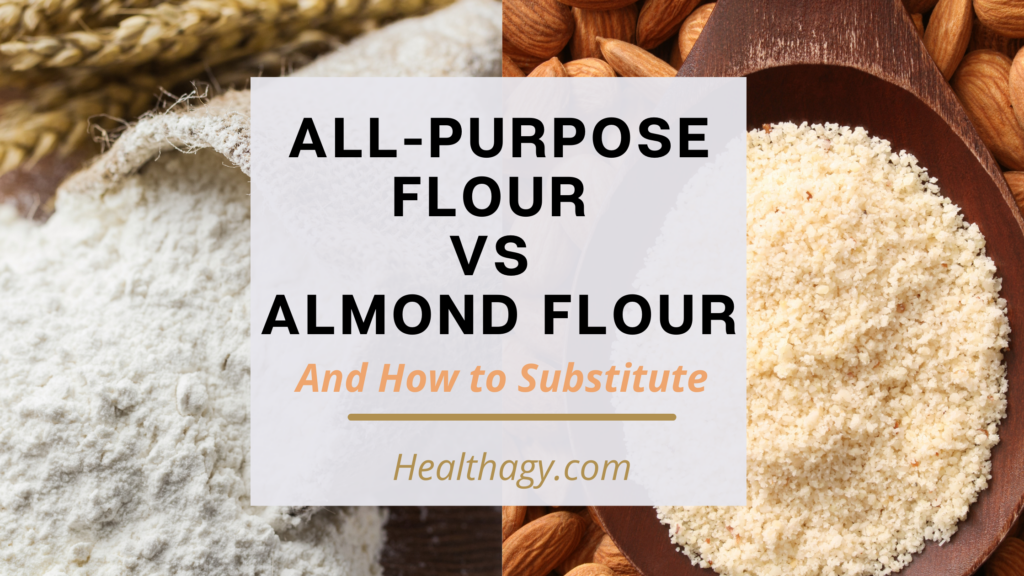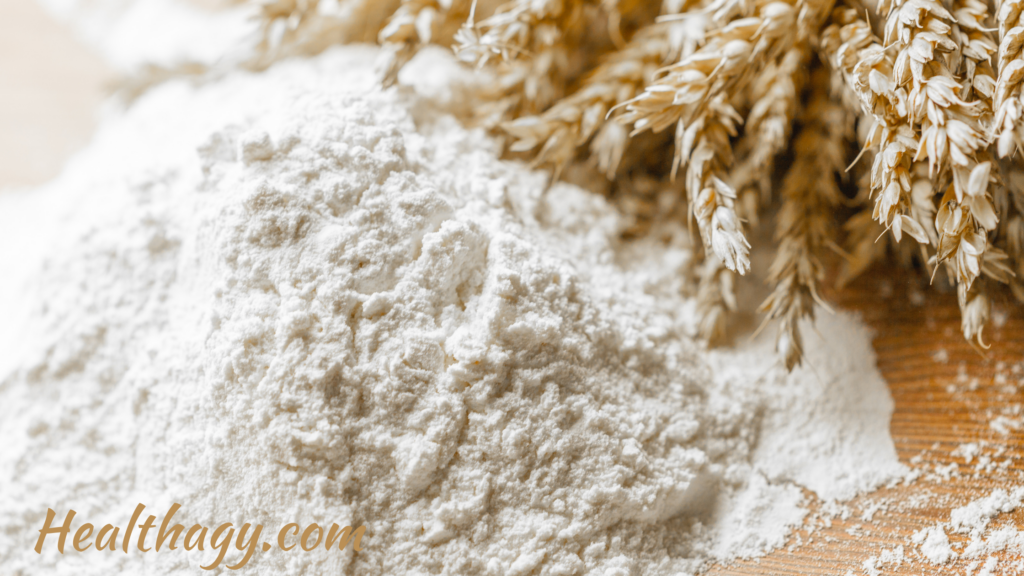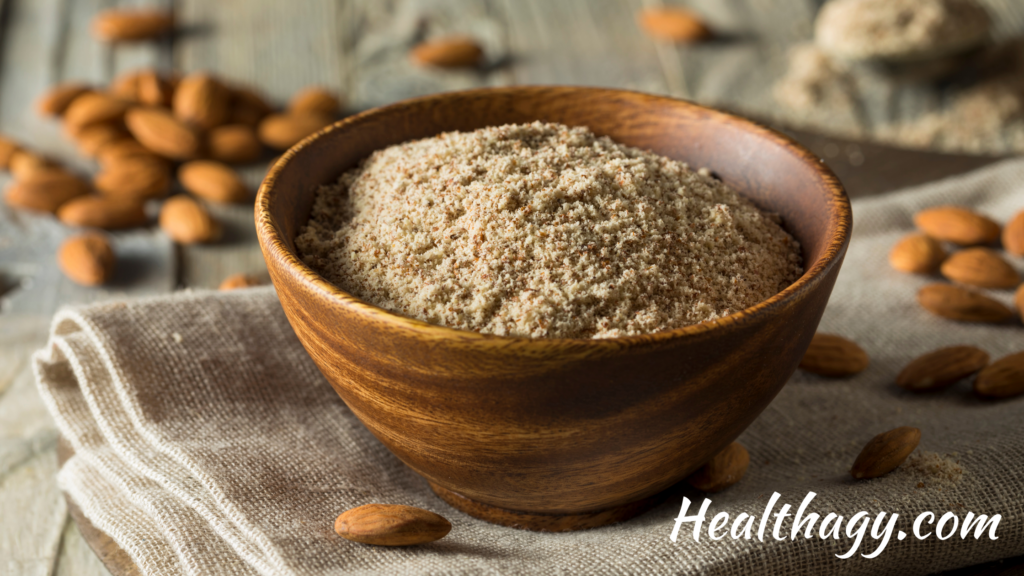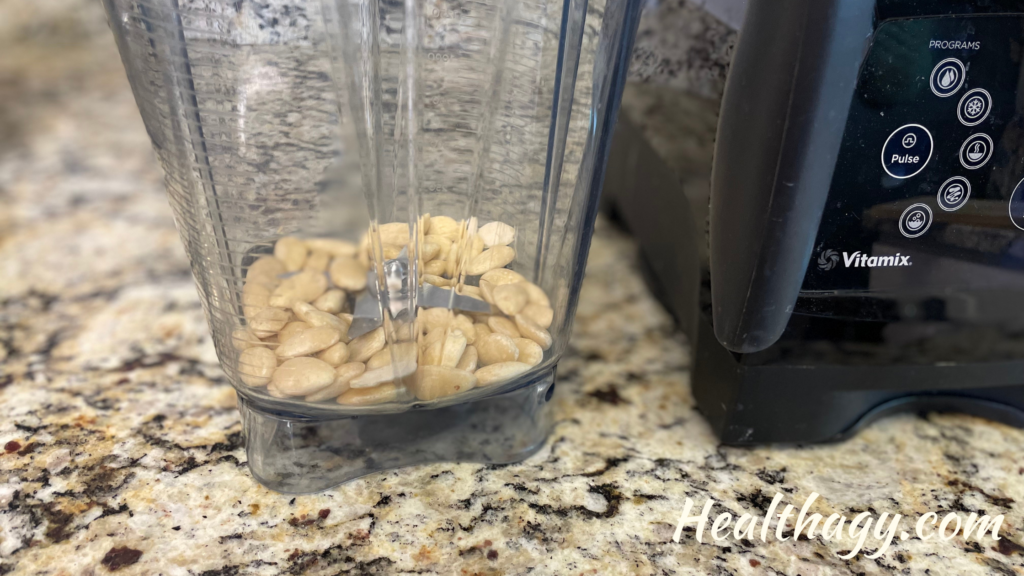
If you’ve been in the grocery store’s baking aisle lately, you’ve likely noticed the array of flours you can choose from when making your next loaf of bread or sweet treat. The good news is if you are on a gluten-free diet or looking for healthier alternatives to regular flour or all purpose flour, you have many options to choose from.
In this post, we’ll focus on using almond flour vs all purpose flour. I’ll break down the differences between the two and how and when to use almond flour as a substitute for all purpose flour. Keep reading!
3 Key Differences: All Purpose Flour vs Almond Flour
1. Gluten Content: The main difference between all purpose flour vs almond flour is that all purpose flour is derived from wheat and contains gluten. All purpose flour is used in many traditional baked goods and pastries. Almond flour is used in baked goods as an alternative to all purpose flour. Almond flour is made from ground nuts and is grain-free and gluten-free. Almond flour is a popular alternative for people on a gluten-free diet.
2. Fat Content: Another important distinction between all purpose flour and almond flour is the fat content. All purpose flour is dry flour and does not add much moisture to foods. Almond flour is a high-fat flour that adds extra moisture to baked goods.
When substituting almond flour for all purpose flour, you will use less almond flour due to its high-fat content. The high-fat content also increases how quickly foods cook. When baking with almond flour, it is best to reduce the oven temperature and bake time slightly.
3. Taste: Almond flour tastes just like, well…almonds! Many describe almonds as having a mildly nutty flavor that is slightly sweet with a hint of bitterness. However, it’s still not as neutral as all purpose flour and will have a nuttier flavoring, especially for people who are new to using it. In general, almond flour has a relatively mild sweet flavor, making it a great neutral baking flour as the flavoring is subtle and won’t outperform the other flavors in the recipe or dish.

What is All Purpose Flour?
All Purpose flour is the most common flour used in baking. You may also know it as white flour, wheat flour, or traditional flour.
While a variety of wheat flour strengths are used in professional baking, all purpose flour is a middle-of-the-road flour that is an excellent option for at-home bakers. All purpose flour is commonly used to make things such as pizza dough, bread, pastries, and cakes.
All purpose flour is made from wheat, is refined, and does contain gluten, which may be why you are considering almond flour as an alternative.
On the flipside, all purpose flour can be used as an almond flour substitute if it fits your dietary needs.

What is Almond Flour?
Almond flour is a nutrient-dense, low-carb, grain-free, keto-friendly flour made from almonds. It is one of the best gluten-free flour substitutes for all purpose flour when it comes to baking.
Almond flour is versatile and works with many diets and dietary preferences such as keto, paleo, low-carb diet, grain-free, and gluten-free. It is considered a nut flour as the culinary world considers almonds to be nuts. However, a fun fact is that technically almonds are not nuts. Botanically they are a fruit called a drupe and more similar to a peach. However, we’ll still refer to almonds and almond flour as nut flour for culinary purposes.
However, when it comes to allergies, almonds are categorized as “tree nuts” and should be treated with caution by anyone with food or nut allergies.
Almond flour is made from ground almonds that have had the skins removed and the nuts blanched and finely ground to be more like white flour or regular flour.
Almond flour, like the almond itself, is high in fat, which is also what makes it a great gluten-free alternative for baking goods that are moist, tender, and delicious! There are considerations to make when substituting all purpose flour for almond flour that we’ll get into below.

Most baking recipes call for almond flour. When it comes to baking, it’s important to note you may also find almond meal, which is similar to almond flour except that the almonds are more coarsely ground with the skins intact. The specks of skin give the almond meal some added speckles of color.
Health Benefits and Considerations of Almond Flour
Health Benefits of Almond Flour
Almond flour is a great option to reduce your gluten, carb, grain, and sugar intake. Almond flour has a low glycemic index ranking, which can help people, such as people with diabetes, keep their blood sugar levels stable.
Almond flour is gluten-free and grain-free, making it an excellent option for anyone with celiac disease or gluten intolerance.
Almond flour is considered minimally processed and paleo diet-friendly, and acceptable for anyone on a clean-eating diet.
Almonds contain many health benefits that I’ll outline below. However, almonds (and almond flour) should also be eaten in moderation and not in excess, which I’ll explain in more detail below.
Almonds are a great source of fiber, protein, and fat. They are a great source of copper, vitamin B2, vitamin E, manganese, magnesium, and phosphorus.
The magnesium in almonds can help lower blood pressure levels. Low blood pressure levels can often be a result of a magnesium deficiency. Magnesium can also helps support the management of blood sugar levels.
As a bonus, almonds can also help you feel fuller longer, which can help support weight loss efforts.
Almond Flour Considerations
Although almonds have significant health benefits, there are considerations to note. Almonds are high in phytic acid. Phytic acid is a substance that prevents certain minerals from being absorbed during the digestion process.
Almonds are also high in omega-6 polyunsaturated fatty acids, also known as PUFAs. Omega-6 fatty acids can play a role in a nutritious diet when eaten in balance with omega-3s. Research suggests that an excessive diet of omega-6s can lead to inflammation and other health issues.
Since almond flour is ground up and used in baked goods, it can be trickier to monitor how many almonds you are actually consuming. 1/4 cup of almond flour is very similar to consuming 1/4 cup of almonds. One serving size in a recipe may easily mean you are consuming 1/4- 1/2 cup of almond flour.
A Note on Allergies
As someone who has food and nut allergies myself, it’s important to note that if you have any concerns or previous history of allergic reactions to foods or nuts, you want to consult your doctor before trying almond flour or any nut flours. Nut flours contain the same allergens as their whole nut counterparts and may elicit an allergic response.
Allergy sufferers may consider using another type of flour as an all purpose flour substitute, such as oat flour, rice flour, cassava flour, coconut flour, or a gluten-free flour blend.
Nutritional Profile for Almond Flour
According to the USDA Nutrient Database, in a 1/4 cup serving of organic almond flour, there are:
| Amount | % DV | |
| Calories | 170 cal | |
| Protein | 6 g | 12% |
| Total lipid (fat) | 15 g | 19% |
| Carbohydrates, by the difference | 6 g | 2% |
| Fiber, total dietary | 1.99 g | |
| Sugars | 1 g | |
| Calcium, Ca | 66.1 mg | 6% |
| Iron, Fe | 1 mg | 6% |
| Potassium, K | 190 mg | 4% |
| Fatty acids, total saturated | 1 g | 5% |
| Fatty acids, total trans | 0 g | |
| Cholesterol | 0 mg |
How to Make Almond Flour
While you can buy almond flour in grocery stores, you can also easily make your own almond flour in about 5 minutes at home with the help of a blender or food processor and some blanched almonds.

Add the desired amount of blanched almonds into a blender or food processor. You’ll want to use roughly the amount of almonds you need in ground flour. If you need 1/2 cup of almond flour, start by grinding 1/2 cup of blanched almonds.


Blend on high for about 10 seconds, shake the blender to resettle the almond and flour, and repeat if needed. I completed about three rounds of 7-10 seconds of blending for this finely ground almond powder batch.
A note on blending: Proceed with caution, stopping once it has been ground into a fine powder. If you allow the blender to continue or over blend it, you’ll likely end up with almond butter instead of flour.
How to Blanch Almonds
While buying almonds that already have the skins removed can help save you time in making almond flour, you can also easily remove the skins yourself with a few extra steps.

Add water to a pot of water, bring to a boil
Add the desired amount of almonds

Allow boiling for about 60 seconds

Almonds will rise to the top of the water when they are ready to be peeled
Drain the water and rinse with cold water to cool them down.

Peel skin from almonds; some will pop right out of the skin, like removing a bean from a pod.
Discard skin, and spread almonds out to dry. You’ll know the almonds are dry because they will feel very smooth. Damp almonds have a slightly sticky texture or rub to them.
*If you are in a time pinch, you can put it in the oven at a low setting for just a couple of minutes to help speed up the drying. Just be sure not to “cook them.”
How to Substitute Almond Flour for All Purpose Flour
Almond flour has a high-fat content and contains a lot of extra moisture, so you need to make some considerations when using it as a flour alternative. You may also need to give yourself permission to experiment and be patient in finding the best amount of almonds.
Almond Flour Substitution Tips & Tricks
1. Measuring
Almond flour should be loose when measuring. You don’t want to pack it down. You may also consider weighing it for better accuracy. One cup of blanched almond flour is equivalent to four ounces.
2. Less is Best
If you’re converting a traditional flour such as all purpose flour to an almond flour recipe, you’ll need less almond flour for every cup of regular flour. A general guideline is about 1/4 to 1/3 cup of almond flour for one cup of all purpose flour.
Some people find combining almond flour with another flour, such as coconut flour, to produce great results. Almond flour provides moisture in baked goods, while coconut flour dries it out some. Together they can create an excellent balance and a desirable texture for your baked treats. You can also consider a variety of other alternative types of flour, such as oat flour, rice flour, cassava flour, or a gluten-free flour blend.
3. Use a Binder
As with many alternative flours, you’ll need to use a binder with almond flour. A binder helps to “bind” the flour together. In regular wheat flour, the gluten acts as a glue to bind the flour together. A few standard binders used with almond flour are psyllium husk, xanthan gum, and guar gum.
4. Adjust Temperature and Baking Time
Foods containing almond flour tend to bake faster than their traditional counterparts. Until you know exactly how long a new recipe takes to bake, it’s best to closely monitor how it’s cooking in the oven to ensure it’s not overcooked. Try lowering the temperature by 25 degrees and shortening the cooking time by about 25% of the amount of time. Also, you’ll want to allow your almond flour baked goods to cool off so they have time to firm up and hold their structure, as they may crumble easier when warm than gluten-filled baked goods.
Storage of Almond Flour
Almond flour will go rancid quicker than all purpose flour, so it’s essential to store it well.
Almond flour is best stored in an airtight container, in a cool and dark place, as light and heat aren’t good for oil-rich nut flours. The refrigerator is the best place to store it. The shelf life of almond flour stored in the fridge is about six months. You can keep it in the freezer for more extended storage for about a year.
If almond flour has been out at room temperature for storage, make sure to smell it and look for any signs of rancidity before use.
Karla Kueber is a Certified Evidence Based EFT Practioner and Health Coach, with a double Masters Degree in Education. She works with people to overcome emotional eating, curb cravings, and overcome resistance to eating new healthy foods. You can learn more about coaching with her here.